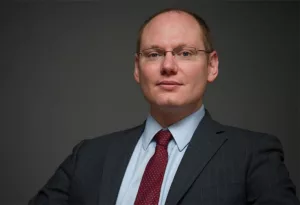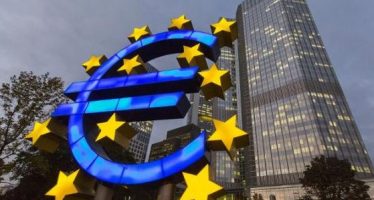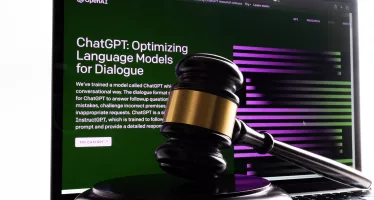Death to Debt! The People and Organisations Saying ‘No to Owe’ — and Picking Up the Tab for Us
Consumer and family debt are millstones that can — sometimes — be removed…

Louis Hyman
Debt is a modern reality for countries, companies and households, but — according to historian Louis Hyman — consumer debt is a relatively new phenomenon.
Hyman links it to the advent of the automobile and intermediary finance companies. “For the first time, money from the core of capitalism, the consumer banks, was invested, albeit indirectly, in consumer debt,” he writes.
“What began with automobiles spread to vacuum cleaners, furniture, radios, and nearly every kind of durable good desired in the great boom of the 1920s. Lending was still limited to finance companies, which were limited to repossess-able, durable goods, but for the first time, American personal debt had become a good investment.”
Fast-forward a century or so and the world’s debt obligations have ballooned out of control. As of August 2022, the US topped the charts for the highest household debt — a staggering $16.5tn. China and Japan take second and third places on the list, with respective figures of $10.9tn and $2.6tn. EU households owe a combined $7.1tn; the UK’s figure sits at about $2.4tn. These figures include home mortgages, student loans, credit cards and medical debt. But hope is on the horizon.
Community-led Debt Relief
In the UK, Dan Edelstyn and Hilary Powell are blurring the lines between art, economics, and activism. The duo literally and figuratively blew up £1.2m in local predatory high-interest payday-loan debt in a 2019 movie project Bank Job. Filmmaker Edelstyn and artist Powell were inspired by the exploits of the Rolling Jubilee Fund and Debt Collective, which, over the past decade, has raised around $700,000 to abolish $32m in student, medical, and probation debt.
Debt Collective believes that access to things like education and healthcare must be available for free, as they are in most wealthy countries. The decentralised organisation strives to make this dream a reality by uniting debtors to use their collective debts as leverage.
Hyman’s historical research outlines how the wealth inequality gap began to widen in the 1970s, as more capital concentrated in the top one percent of the population. “Whereas in the post-war period, the one percent paid the 99 percent in wages, after 1970 the one percent increasingly just lent the 99 percent money. Mortgage-backed securities and then other forms of asset-backed securities channelled capital from the top to the borrowers at the bottom. The shift was rapid. In 1990, one percent of US credit card balances were securitised, but by 1996, 45 percent were securitised.”
Books like David Graeber’s The 5,000 years of Debt and Andrew Ross’s Creditocracy expand on the topic. “The whole literature around it was quite altering, in terms of how you look at the world, and how you look at the relationships between people in our society,” remembers Edelstyn. “It opened my mind to a whole different way of analysing social relations and economic relations.”
The more Edelstyn and Powell researched, the more they noticed how interlinked money creation is with debt, banking regulations, and changes to the banking system.
“Enough was enough. I felt this notion of ‘creditocracy’ was self-evident and something had to be done,” said Edelstyn. “We realised that banking was right at the core of the problem of creating all of this debt, and we also realised that we needed to make money quite quickly.”
Powell wondered: “If banks can create their own money at the click of a button, why can’t we? Rather than using it to profit though, our idea was to use it to help those most affected by the fall-out of our unequal debt-based economy.”
The husband-and-wife activists found an old co-op bank building to rent, dubbed their new enterprise the Hoe Street Central Bank (HSCB) and began to print fine-art bank notes depicting local heroes like the founders of a food bank and homeless kitchen, and the head of a primary school. They sold the screen-printed art currency at the face value of the notes — one, five, 10, 20, 50, 100 and 1,000 — and split the proceeds, supporting local organisations and buying payday-loan debt. They raised £40,000, half of which went back into the community; the other half went towards the purchase of high-interest debt.
Unpaid debts are often sold on the secondary debt market for a fraction of what’s owed. An FCA-licensed debt-buyer, such as a collection agency, can acquire £1,000 of personal debt for under £100 — and then chase the debtor for their full bill plus accrued interest. Threatening letters and persistent phone calls are common tactics.
Edelstyn and Powell spent £20,000 to acquire £1.2m in geo-targeted payday debt. In March 2019, they sent out 411 letters to debtors with long overdue accounts, not to request repayment but to invite them to watch the artists-activists blow up that debt. They stuffed the account paperwork in a “debt-in-transit” van and detonated it near London’s Canary Wharf.
HSCB notes are no longer available, but the bank is still selling bonds to amplify the reverberations of its “bank heist”. The bond certificates were created by local artisans working with traditional methods of screen printing, letterpress, foil block, and company stamp. Bondholders of £50 or more also receive a commemorative coin made from fragments of the van explosion.
Other organisations have taken a similar — although not as explosive — path to debt-forgiveness.
Medical Debt Relief
RIP Medical Debt, a 501 (tax-exempt) charity based in New York, was founded in 2014 by former debt-collection executives. Since its launch, the organisation has abolished over $8.5bn in medical debt. The ongoing campaign promises that for every $100 donated, $10,000 in medical debt can be relieved.
A portion of the debt-forgiveness by RIP Medical Debt — some $147m — was achieved with the support of Sharon McMahon’s “Governerds” community.
McMahon, a former high school government and law teacher, became an Instagram sensation during the 2020 US presidential election. She began posting stories to provide people with fact-based explanations and non-partisan news during the political turmoil. Several of her posts went viral and now she has over a million followers, many of whom have mobilised under her call for collective action.
Apart from the medical debt forgiveness, McMahon and the Governerds have raised $623,000 to support Ukrainian war-relief via on-the-ground organisations such as World Central Kitchen and CARE. In 2021, McMahon launched a teacher grant programme and raised over $560,000. When she reopened the programme in 2022, the community raised $1.2m — most within the first weekend.
“I am hopeful that we can be the change we wish to see,” she said, “that every small action has an infinite number of ripples; that, incrementally, and slowly, and through this grassroots effort, we can affect significant change in the world. I am very encouraged by seeing what is coming out of my community, and what can happen when we work together instead of working against each other.”
The US Consumer Financial Protection Bureau (CFPB) explains how medical debt negatively impacts millions of Americans. Around two-thirds of bankruptcies in the US involve medical debt. Around 20 percent of US households are burdened by medical debt, which represents over half of the unpaid bills on credit reports.
“When it comes to medical bills, Americans are often caught in a doom-loop between their medical provider and insurance company,” said CFPB director Rohit Chopra. “Our credit reporting system is too often used as a tool to coerce and extort patients into paying medical bills they may not even owe.”
Mistakes are common as medical debt passes through the credit-reporting infrastructure, and patients often have difficulty getting errors corrected or resolved. The situation has been exacerbated by the pandemic and the costs incurred to cover Covid testing, treatment and hospitalisation.
Past-due medical debt affects households unevenly in the US. It’s more prevalent among black (28 percent) and Hispanic (22 percent) citizens than the white (17 percent) or Asian communities (10 percent). It’s also more common in the south-east and mid-west US, where only nine to 20 percent of the population is covered by Medicaid and the Children’s Health Insurance Programme.
CFPB research suggests that medical debt weakens underwriting accuracy. Despite being less predictive of future repayment than traditional obligations, it can lead to lower credit scores. A poor credit rating can make it harder to rent an apartment, get a loan, or take out a mortgage. It can even be an impediment to employment.
Public pressure has led the three biggest credit reporting agencies in the US — Equifax, Experian and TransUnion — to implement changes that will remove around 70 percent of medical collection debt from Americans’ credit reports. Once paid, medical debt will no longer be included in reports; previously, medical collection debt lingered on a person’s credit report for seven years.
People will have 12 (rather than six) months to clear medical bills before any unpaid collection debt appears on reports. Finally, no agencies will include medical debt of less than $500 on a credit report. According to the CFPB, the majority of medical debt falls under that threshold.
These changes have resulted in the removal of an estimated $60bn in medical debt from US consumers’ credit reports.
“That will give patients more time to sort out these bills with their insurance company — which is often a time-consuming and frustrating process,” said Ted Rossman, a senior industry analyst at Bankrate.
“Medical debt is often the most depressing and stressful kind, because you or a loved one just endured a health-scare — only to face huge bills you can’t afford,” said Howard Dvorkin, CPA, chairman of Debt.com. “You’re already fragile, either physically or emotionally, and often both. Pile medical debt on top of that, and it can crush anyone’s resolve.”
According to the Kaiser Family Foundation, a non-profit focusing on health policy analysis and journalism, 53 percent of Americans with $10,000 or more in medical debt fear that they’ll never be able to pay it off.
Student Loan Relief
Chegg.org research found that a third of Americans felt unable to clear study-related debt, and a College Board study found that the average cost of a four-year degree from a public or private institution has doubled over the past three decades. Outstanding student loan debt in the US totalled $1.76tn in the fourth quarter of 2022, compared to $481bn at the start of 2006. That makes student loan debt almost equal to the size of the economies of Brazil or Australia.
But relief is coming, if US president Joe Biden has anything to say about it. “The burden is so heavy that even if you graduate,” he said, “you may not have access to the middle-class life that the college degree once provided.”
The Biden administration introduced a plan to provide up to $20,000 in debt relief for individuals earning less than $125,000 a year, or households earning less than $250,000. When the programme opened last year, it was inundated with millions of applications.
Relief efforts were halted by legal challenges, and ultimately blocked by two federal courts.
Other changes to the income-driven repayment plan for federal student loans could “reduce monthly payments for millions of borrowers, expand the loan periods that can count towards eventual loan-forgiveness, and shorten the loan-forgiveness term for some undergraduate borrowers with low initial balances”.
Conservatives are challenging the authority of the executive branch to enact such sweeping changes. The fate of the student loan relief package now rests with the Supreme Court, which is expected to deliver a verdict by June 2023.
Critics of debt-forgiveness programmes complain that it’s a patchwork solution for a systemic problem. But for anyone lucky enough to receive it, it must feel like a new lease on life.
You may have an interest in also reading…
The Sudden Fall and Coming Resuscitation of Reaganomics
Trickle-down economics was counted amongst the first fatalities of the corona pandemic. The belief that government interference with the functioning
Judges Approve use of ChatGPT in Legal Rulings, Despite Its Tendency to Fib — and ‘Invent’ False Cases
Fallible AI gets the go-ahead in Britain to summarise lengthy texts and perform ‘administrative’ court tasks. UK judges will be
Commissioner Gentiloni on EU Economy: Andante Ma Non Troppo
The V-shaped economic recovery expected to unfold next year is merely an illusion sourced from wishful thinking. Yesterday, EU Commissioner


















































































